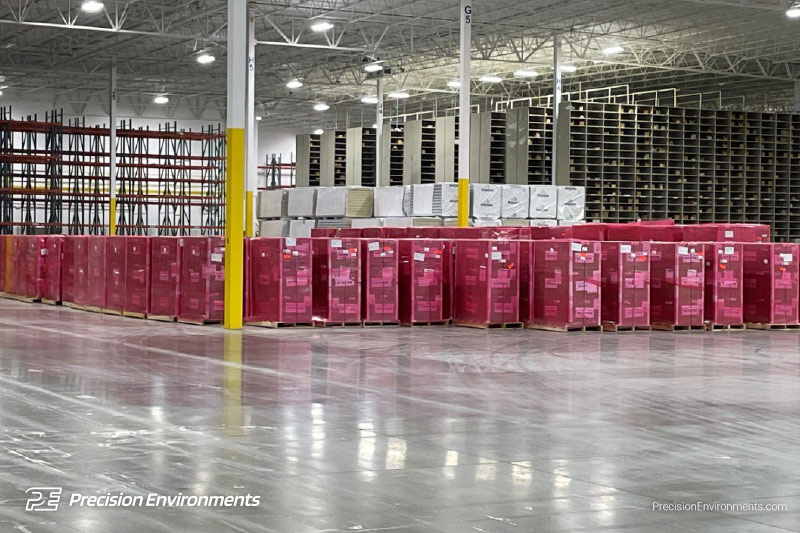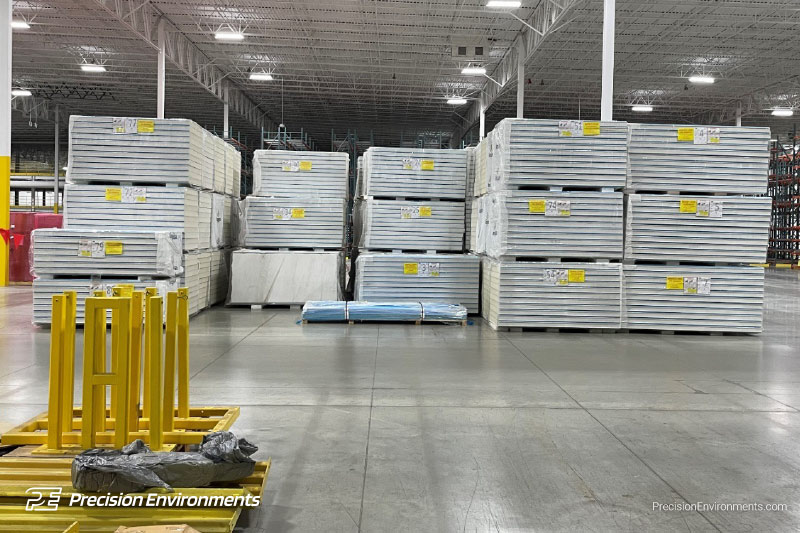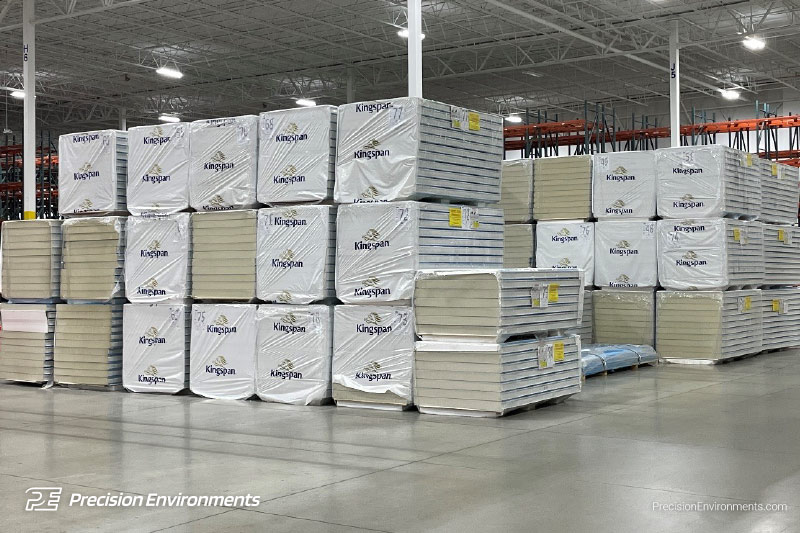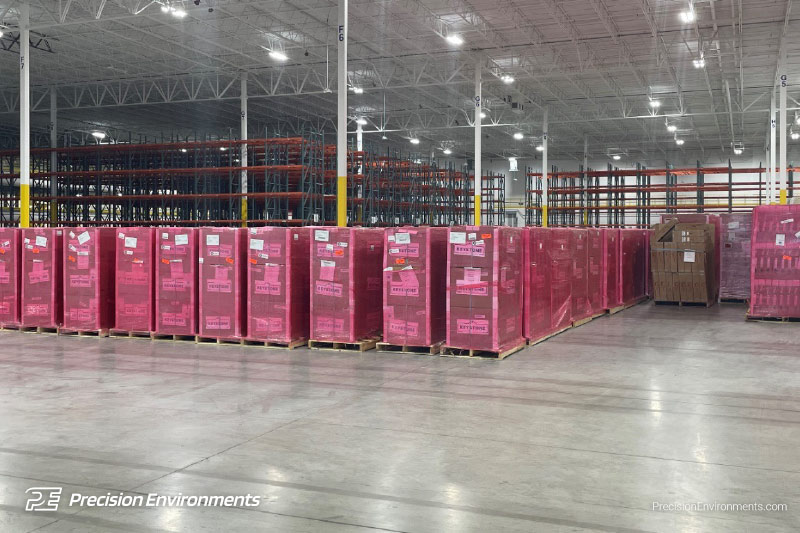What is a Construction Staging Area?
Construction Staging Area
A construction staging area is the area near the cleanroom site that is used as a temporary area for the purpose of carrying out cleanroom installation activities. It serves as a place for storing material, equipment, assembling and as a work area for the installation crews to begin construction activities. The staging area should be sufficient for working safely and well protected to prevent accidents. This area shall be a designated area for the storage of materials, equipment, tools, waste bins, and other construction- related materials during a construction project.
A construction staging area is a crucial component in the cleanroom installation process as it serves multiple purposes that contribute to a smooth and organized execution of the project. Here are some reasons why a construction staging area is important:
- Organization and Storage: A staging area provides a centralized location to store materials, equipment, and tools. This organization helps in reducing clutter on the job site, minimizing the risk of damage to materials, and promoting easier access to necessary resources.
- Assembly and Pre-fabrication: In many cases, certain construction elements need to be assembled or prefabricated before being incorporated into the project. A staging area offers a dedicated space for these tasks, allowing for better quality control and more efficient assembly processes.
- Waste Management: Construction projects generate waste materials, which need to be disposed of or recycled properly. A staging area can serve as a collection point for waste, making it easier to process, separate, and transport waste materials to their final destinations.
- Worker Safety: A well-organized and maintained staging area contributes to improved worker safety by reducing the risk of accidents resulting from cluttered workspaces, misplaced tools, or improperly stored materials.
- Site Logistics: Staging areas may also serve as a strategic location for coordinating site logistics, such as directing delivery trucks, organizing subcontractor activities, and coordinating overall workflow on the construction site.









